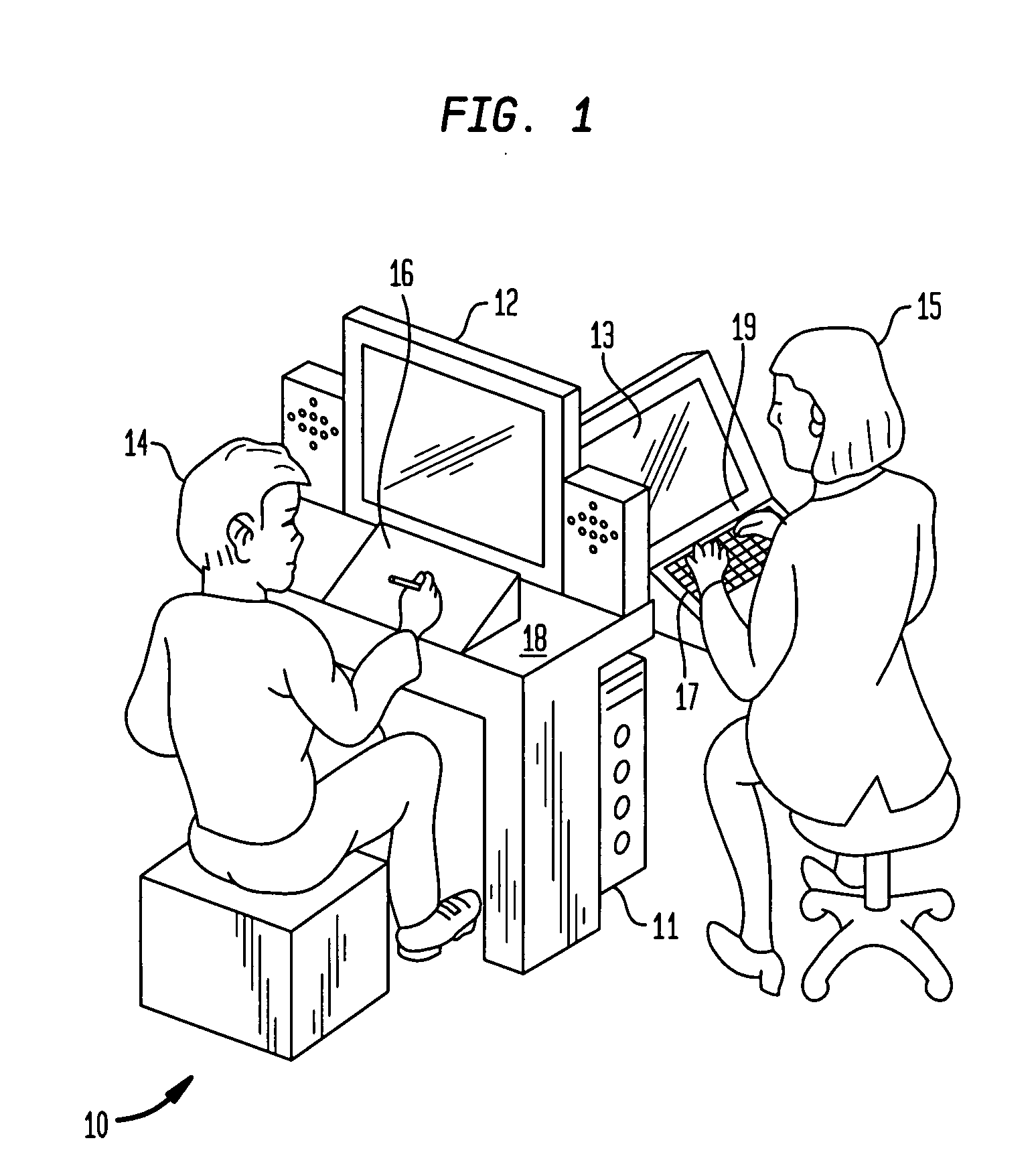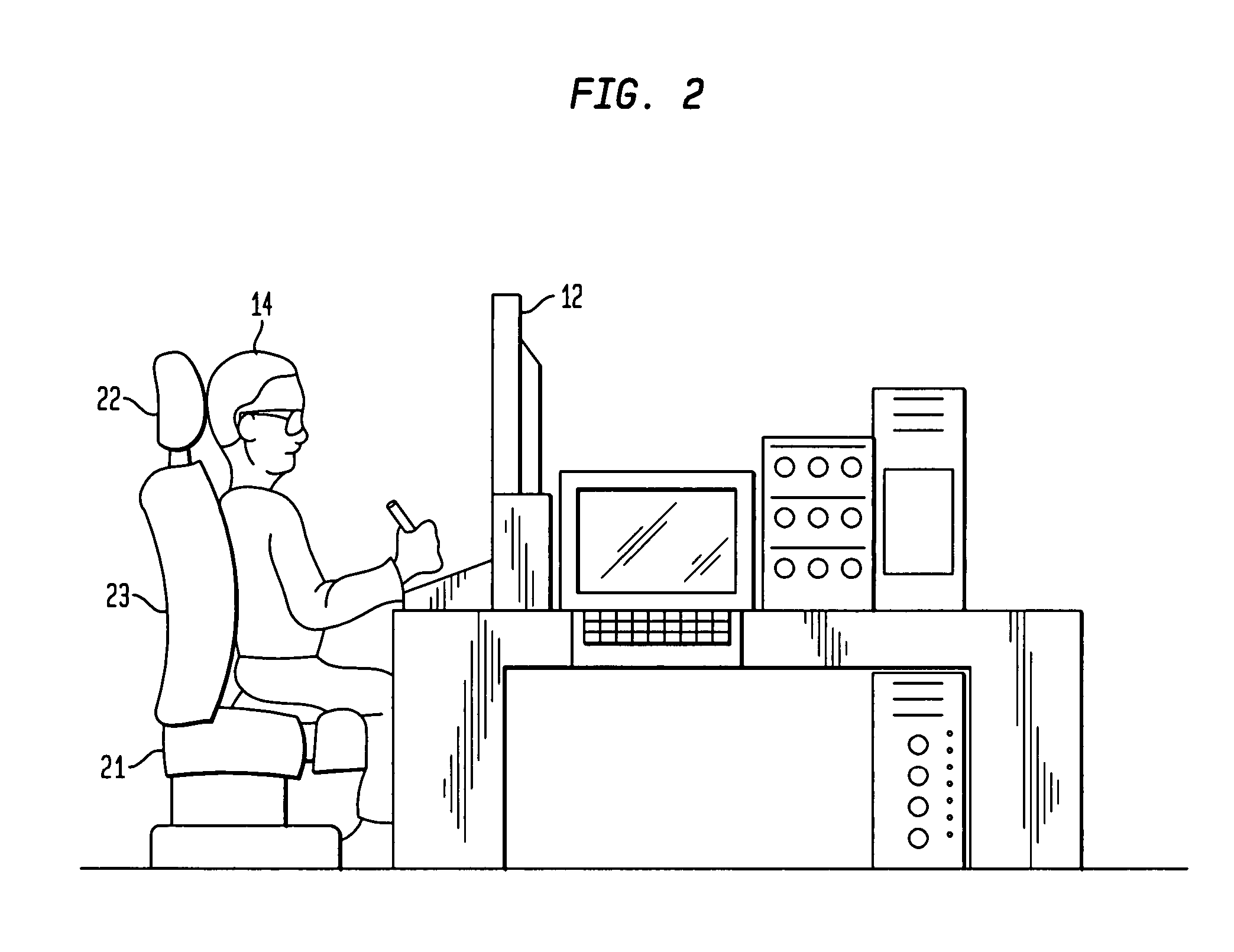System for enhancement of neurophysiological processes
a neurophysiological process and system technology, applied in the field of system for the enhancement of the neurophysiological processes of a person, can solve the problems of reading disorders that are psychologically and economically damaging to a person, the inability of a person to properly process visual images, and the inability of a person to read properly, so as to achieve the effect of optimizing the performance of a patien
- Summary
- Abstract
- Description
- Claims
- Application Information
AI Technical Summary
Benefits of technology
Problems solved by technology
Method used
Image
Examples
Embodiment Construction
[0056] With reference to FIG. 1, apparatus according to the invention is shown generally at 10 and includes a computer processor 11, a patient console 18 including a patient visual display unit (VDU) 12 and patient input means 16, and a therapist console 19 including a therapist visual display unit 13 and therapist input means 17. A patient 14 is shown at the patient console 18 whilst a therapist 15 is shown at the therapist console 19. The position of the patient console 18 is such that a patient 14 is unable to view the VDU 13 of the therapist console whilst viewing the patient VDU 12. In the case of the patient console shown, the patient input means is an electronic writing pad whilst the therapist inputs information via a conventional keyboard 17.
[0057] In FIG. 2 an alternative arrangement is shown wherein the patient 14 is seated on an electronically adjustable seat 21 that can be moved up and down as well as laterally. The headrest 22 and backrest 23 can also be controlled to...
PUM
 Login to View More
Login to View More Abstract
Description
Claims
Application Information
 Login to View More
Login to View More - R&D
- Intellectual Property
- Life Sciences
- Materials
- Tech Scout
- Unparalleled Data Quality
- Higher Quality Content
- 60% Fewer Hallucinations
Browse by: Latest US Patents, China's latest patents, Technical Efficacy Thesaurus, Application Domain, Technology Topic, Popular Technical Reports.
© 2025 PatSnap. All rights reserved.Legal|Privacy policy|Modern Slavery Act Transparency Statement|Sitemap|About US| Contact US: help@patsnap.com



